Damage Assessment Using Information Entropy of Individual Acoustic Emission Waveforms during Cyclic Fatigue Loading
Abstract
:Featured Application
Abstract
1. Introduction
2. Information Entropy
2.1. Information Entropy Fundamentals
2.2. Information Entropy of Individual AE Waveforms
3. Materials and Methods
3.1. Specimens
3.2. Instrumentation
3.3. Noise Reduction
3.4. Modulus Degradation
4. Results and Discussion
4.1. Cumulative Instantaneous Entropy, Counts, and Energy
4.1.1. Comparing Cyclic Evolutions and Values at Fracture
4.1.2. Comparing Damage Trends
4.2. Average and Weighted Average Entropy
5. Conclusions
Supplementary Materials
Acknowledgments
Author Contributions
Conflicts of Interest
References
- Iyyer, N.; Sarkar, S.; Merrill, R.; Phan, N. Aircraft life management using crack initiation and crack growth models-P-3C Aircraft experience. Int. J. Fatigue 2007, 29, 1584–1607. [Google Scholar] [CrossRef]
- Hoffman, M.E.; Hoffman, P.C. Corrosion and fatigue research—Structural issues and relevance to naval aviation. Int. J. Fatigue 2001, 23, S1–S10. [Google Scholar] [CrossRef]
- Hellier, C.J. Acoustic emission testing. In Handbook of Nondestructive Evaluation; McGraw-Hill: New York, NY, USA, 2001; pp. 10.1–10.39. [Google Scholar]
- Morton, T.M.; Harrington, R.M.; Bjelectich, J.G. Acoustic emissions of fatigue crack growth. Eng. Fract. Mech. 1973, 5, 691–697. [Google Scholar] [CrossRef]
- Bassim, M.N.; Lawrence, S.S.; Liu, C.D. Detection of the onset of fatigue crack growth in rail steels using acoustic emission. Eng. Fract. Mech. 1994, 47, 207–214. [Google Scholar] [CrossRef]
- Berkovits, A.; Fang, D. Study of fatigue crack characteristics by acoustic emission. Eng. Fract. Mech. 1995, 51, 401–416. [Google Scholar] [CrossRef]
- Roberts, T.M.; Talebzadeh, M. Fatigue life prediction based on crack propagation and acoustic emission count rates. J. Constr. Steel Res. 2003, 59, 679–694. [Google Scholar] [CrossRef]
- Roberts, T.M.; Talebzadeh, M. Acoustic emission monitoring of fatigue crack propagation. J. Constr. Steel Res. 2003, 59, 695–712. [Google Scholar] [CrossRef]
- Chang, H.; Han, E.; Wang, J.Q.; Ke, W. Acoustic emission study of corrosion fatigue crack propagation mechanism for LY12CZ and 7075-T6 aluminum alloys. J. Mater. Sci. 2005, 40, 5669–5674. [Google Scholar] [CrossRef]
- Rabiei, M. A Bayesian Framework for Structural Health Management Using Acoustic Emission Monitoring and Periodic Inspections. Ph.D. Dissertation, University of Maryland, College Park, MD, USA, 2011. [Google Scholar]
- Han, A.; Luo, H.; Zhang, Y.; Cao, J. Effects of micro-structure on fatigue crack propagation and acoustic emission behaviors in a micro-alloyed steel. Mater. Sci. Eng. A 2013, 559, 534–542. [Google Scholar] [CrossRef]
- Keshtgar, A. Acoustic Emission-Based Structural Health Management and Prognostics Subject to Small Fatigue Cracks. Ph.D. Dissertation, University of Maryland, College Park, MD, USA, 2013. [Google Scholar]
- Sauerbrunn, C.; Modarres, M. Effects of material variation on acoustic emissions-based, large-crack growth model. In Proceedings of the 2016 25th ASNT Research Symposium, New Orleans, LA, USA, 11–14 April 2016; pp. 105–109. [Google Scholar]
- Vanniamparambil, P.A.; Bartoli, I.; Hazeli, K.; Cuadra, J.; Schwartz, E.; Saralaya, R.; Kontsos, A. An integrated structural health monitoring approach for crack growth monitoring. J. Intell. Mater. Syst. Struct. 2012, 23, 1563–1573. [Google Scholar] [CrossRef]
- Vanniamparambil, P.A.; Guclu, U.; Kontsos, A. Identification of crack initiation in aluminum alloys using acoustic emission. Exp. Mech. 2015, 55, 1–14. [Google Scholar] [CrossRef]
- Aggelis, D.G.; Kordatos, E.Z.; Matikas, T.E. Monitoring of metal fatigue damage using acoustic emission and thermography. J. Acoust. Emiss. 2011, 29, 113–122. [Google Scholar]
- Kordatos, E.Z.; Aggelis, D.G.; Matikas, T.E. Monitoring mechanical damage in structural materials using complimentary NDE techniques based on thermography and acoustic emission. Compos. B Eng. 2012, 43, 2676–2686. [Google Scholar] [CrossRef]
- James, D.; Carpenter, S. Relationship between acoustic emission and dislocation kinetics in crystalline solids. J. Appl. Phys. 1971, 42, 4685–4697. [Google Scholar] [CrossRef]
- Trochidis, A.; Polyzos, B. Dislocation annihilation and acoustic emission during plastic deformation of crystals. J. Mech. Phys. Solids 1994, 42, 1933–1944. [Google Scholar] [CrossRef]
- Polyzos, B.; Trochidis, A. Dislocation dynamics and acoustic emission during plastic deformation of crystals. Wave Motion 1995, 21, 343–355. [Google Scholar] [CrossRef]
- Polyzos, B.; Douka, E.; Trochidis, A. Acoustic emission induced by dislocation annihilation during plastic deformation of crystals. J. Appl. Phys. 2001, 89, 2124–2129. [Google Scholar] [CrossRef]
- Rahman, Z.; Ohba, H.; Yoshioka, T.; Yamamoto, T. Incipient damage detection and its propagation monitoring of rolling contact fatigue by acoustic emission. Tribol. Int. 2009, 42, 807–815. [Google Scholar] [CrossRef]
- Elforjani, M.; Mba, D. Detecting natural crack initiation and crack in slow speed shafts with the acoustic emission technology. Eng. Fail. Anal. 2009, 16, 2121–2129. [Google Scholar] [CrossRef]
- Lugo, M.; Jordon, J.B.; Horstemeyer, M.F.; Tschopp, M.A.; Harris, J.; Gokhale, A.M. Quantification of damage evolution in a 7075 aluminum alloy using an acoustic emission technique. Mater. Sci. Eng. A Struct. 2011, 528, 6708–6714. [Google Scholar] [CrossRef]
- Chaswal, V.; Sasikala, G.; Ray, S.K.; Mannan, S.L.; Raj, B. Fatigue crack growth mechanism in aged 9Cro-1Mo steel: Threshold and Paris regimes. Mater. Sci. Eng. A Struct. 2005, 395, 251–264. [Google Scholar] [CrossRef]
- Han, Z.; Luo, H.; Sun, C.; Li, J.; Papaelias, M.; Davis, C. Acoustic emission study of fatigue crack propagation in extruded AZ31 magnesium alloy. Mater. Sci. Eng. A Struct. 2014, 597, 270–278. [Google Scholar] [CrossRef]
- Čapek, J.; Máthis, K.; Clausen, B.; Stráská, J.; Beran, P.; Lukáš, P. Study of the loading mode dependence of the twinning in random textured cast magnesium by acoustic emission and neutron diffraction methods. Mater. Sci. Eng. A Struct. 2014, 602, 25–32. [Google Scholar] [CrossRef]
- Mazal, P.; Vlasic, F.; Koula, V. Use of acoustic emission method for identification of fatigue micro-cracks creation. Procedia Eng. 2015, 133, 379–388. [Google Scholar] [CrossRef]
- Gager, D.; Foote, P.; Irving, P.E. Effects of loading and sample geometry on acoustic emission generation during fatigue crack growth: Implications for structural health monitoring. Int. J. Fatigue 2015, 81, 117–127. [Google Scholar] [CrossRef]
- Shiotani, T.; Aggelis, D.G. Wave propagation in cementitious material containing artificial distributed damage. Mater. Struct. 2009, 42, 377–384. [Google Scholar] [CrossRef]
- Sauerbrunn, C. Evaluating Information Entropy from Acoustic Emission Waveforms As a Fatigue Damage Metric for Al7075-T6. Master’s Thesis, University of Maryland, College Park, MD, USA, 2016. [Google Scholar]
- Unnthorsson, R.; Runarsson, T.; Jonsson, M. AE entropy for the condition monitoring of CFRP subjected to cyclic failure. J. Acoust. Emiss. 2008, 26, 262–269. [Google Scholar]
- Qi, G.; Fan, M.; Lewis, G. An innovative multi-component variate that reveals hierarchy and evolution of structural damage in a solid: Application to acrylic bone cement. J. Mater. Sci. Mater. Med. 2012, 23, 217–228. [Google Scholar] [CrossRef] [PubMed]
- Ramasso, E.; Placet, V.; Boubakar, L. Unsupervised consensus clustering of acoustic emission time-series for robust damage sequence estimation in composites. IEEE Trans. Instrum. Meas. Soc. 2015, 64, 3297–3307. [Google Scholar] [CrossRef]
- Amiri, M.; Modarres, M. AE entropy for detection of fatigue crack initiation and growth. In Proceedings of the 2015 IEEE Conference on Prognostics and Health Management, Austin, TX, USA, 22–25 June 2015; pp. 1–8. [Google Scholar]
- Kahirdeh, A.; Sauerbrunn, C.; Modarres, M. Acoustic emission entropy as a measure of damage in materials. In Proceedings of the 35th MAXENT Conference, Postdam, NY, USA, 19–24 July 2015. [Google Scholar]
- Shannon, C.E. A mathematical theory of communication. Bell Syst. Tech. J. 1948, 27, 379–423, 623–656. [Google Scholar] [CrossRef]
- MacKay, D.J.C. Information Theory, Inference, and Learning Algorithms; Cambridge University Press: Cambridge, UK, 2003. [Google Scholar]
- Standard Practice for Conducting Force Controlled Constant Amplitude Axial Fatigue Tests for Metallic Materials; ASTM E466-07; ASTM International: West Conshohocken, PA, USA, 2007.
- Pilkey, W.D. Peterson’s Stress Concentration Factors; John Wiley & Sons, Inc.: New York, NY, USA, 1997. [Google Scholar]
- Standard Practice for Determining the Reproducibility of Acoustic Emission Sensor Response; ASTM E976-15; ASTM International: West Conshohocken, PA, USA, 2015.
- Miller, R. Acoustic emission: An Application to Fracture Mechanics. Ph.D. Dissertation, Purdue University, West Lafayette, IN, USA, 1979. [Google Scholar]
- Kharrat, M.; Ramasso, E.; Placet, V.; Boubakar, M.L. A signal processing approach for enhanced acoustic emission data analysis in high activity systems: Application to organic matrix composites. Mech. Syst. Signal. Process. 2016, 70–71, 1038–1055. [Google Scholar] [CrossRef]
- Doan, D.D.; Ramasso, E.; Placet, V.; Zhang, S.; Boubakar, L.; Zerhouni, N. An unsupervised pattern recognition approach for AE data originating from fatigue tests on polymer–composite materials. Mech. Syst. Signal. Process. 2015, 64, 465–478. [Google Scholar] [CrossRef]
- Dzenis, Y.A. Cycle-based analysis of damage and failure in advanced composites under fatigue: 1. Experimental observation of damage development within loading cycles. Int. J. Fatigue 2003, 25, 499–510. [Google Scholar] [CrossRef]
- Kachanov, L. On time to rupture in creep conditions. Izviestia Akademii Nauk SSSR Otdelenie Tekhnicheskikh Nauk 1958, 8, 26–31. (In Russian) [Google Scholar]
- Schijve, J. Fatigue of Structures and Materials; Kluwer Academic Publishers: Dordrecht, The Netherlands, 2001. [Google Scholar]
- Wu, X.R.; Newman, J.C.; Zhao, W.; Swain, M.H.; Ding, C.F.; Phillips, E.P. Small crack growth and fatigue life predictions for high-strength aluminum alloys: Part I—Experimental and fracture mechanics analysis. Fatigue Fract. Eng. 1998, 21, 1289–1306. [Google Scholar] [CrossRef]
- Newman, J.C.; Wu, X.R.; Swain, M.H.; Zhao, W.; Phillips, E.P.; Ding, C.F. Small crack growth and fatigue life predictions for high-strength aluminum alloys: Part II—Crack closure and fatigue analyses. Fatigue Fract. Eng. 1999, 23, 59–72. [Google Scholar] [CrossRef]
- Forth, S.C.; Newman, J.C., Jr.; Forman, R.G. On generating fatigue crack growth thresholds. Int. J. Fatigue 2003, 25, 9–15. [Google Scholar] [CrossRef]
- Suresh, S.; Ritchie, R.O. Propagation of short fatigue cracks. Int. Met. Rev. 1984, 29, 445–475. [Google Scholar] [CrossRef]
- Pook, L. Metal Fatigue: What It Is, Why It Matters; Springer: Dordrecht, The Netherlands, 2007. [Google Scholar]
- Xue, Y.; McDowell, D.L.; Horstemeyer, M.F.; Dale, M.H.; Jordon, J.B. Microstructure-based multistage fatigue modeling of aluminum alloy 7075-T651. Eng. Fract. Mech. 2007, 74, 2810–2823. [Google Scholar] [CrossRef]
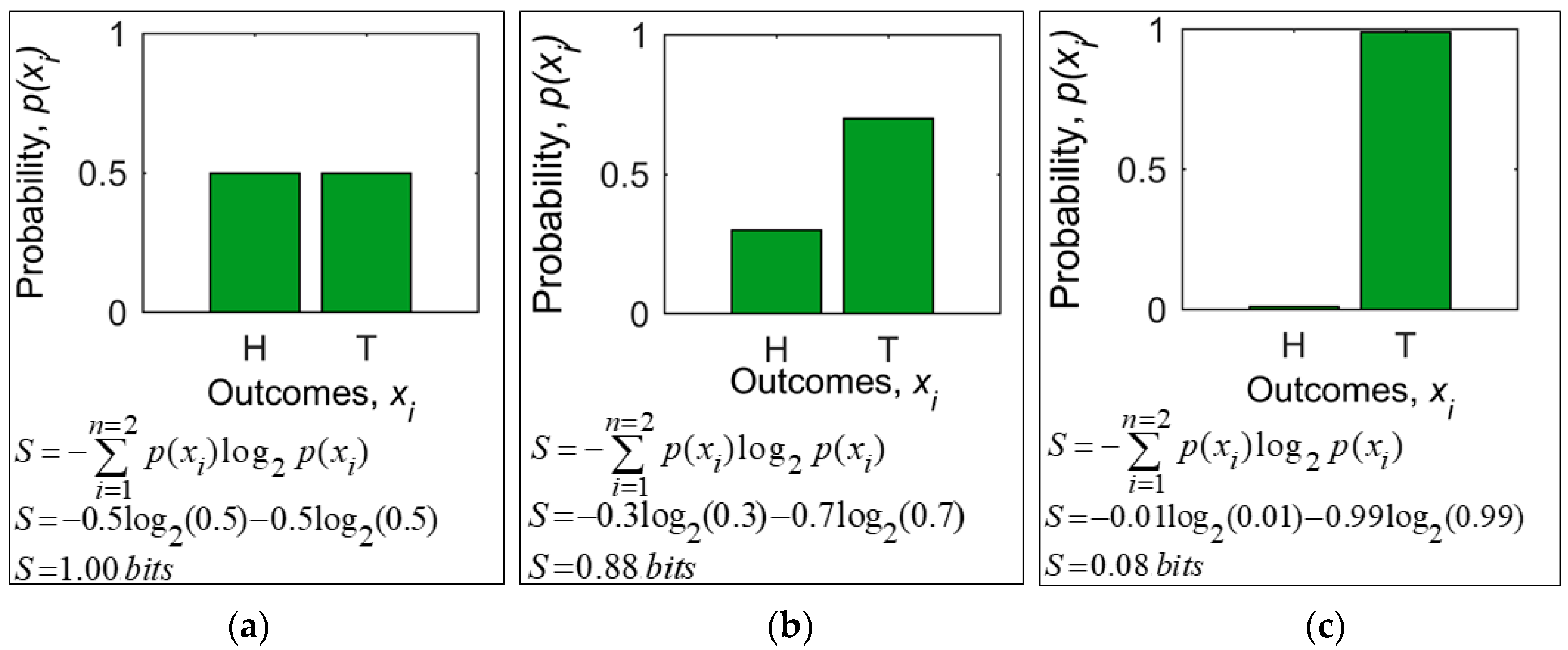
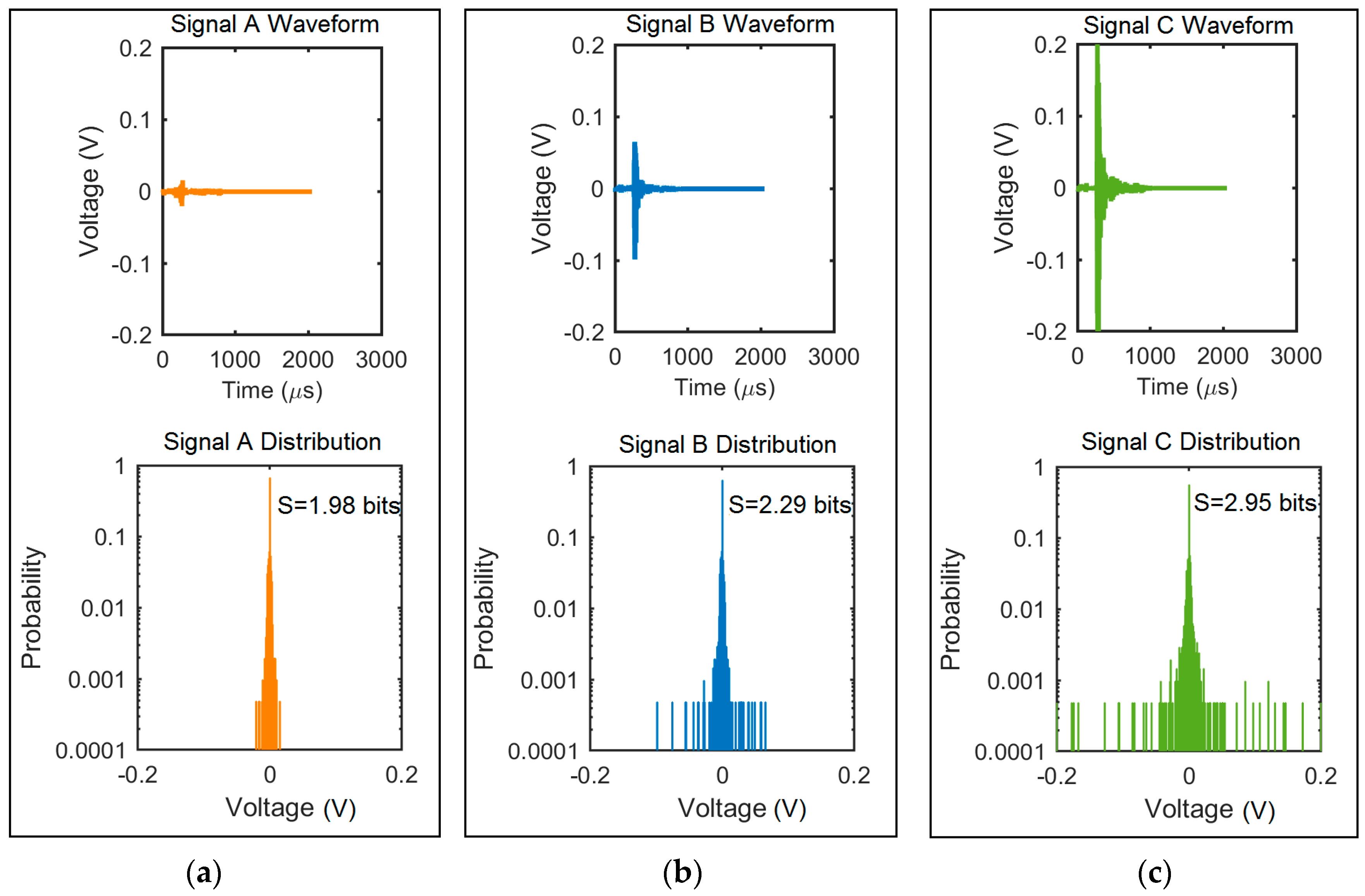
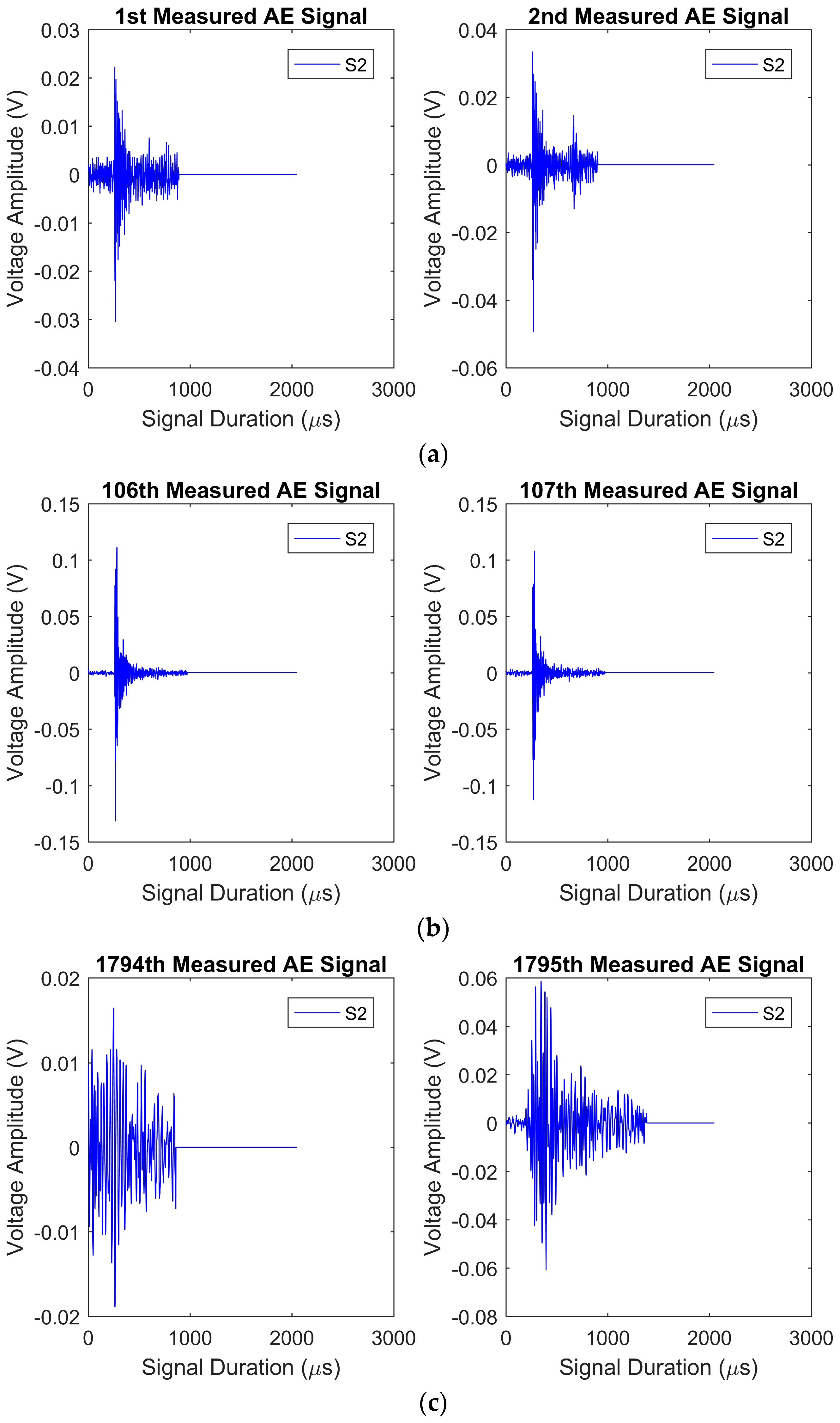
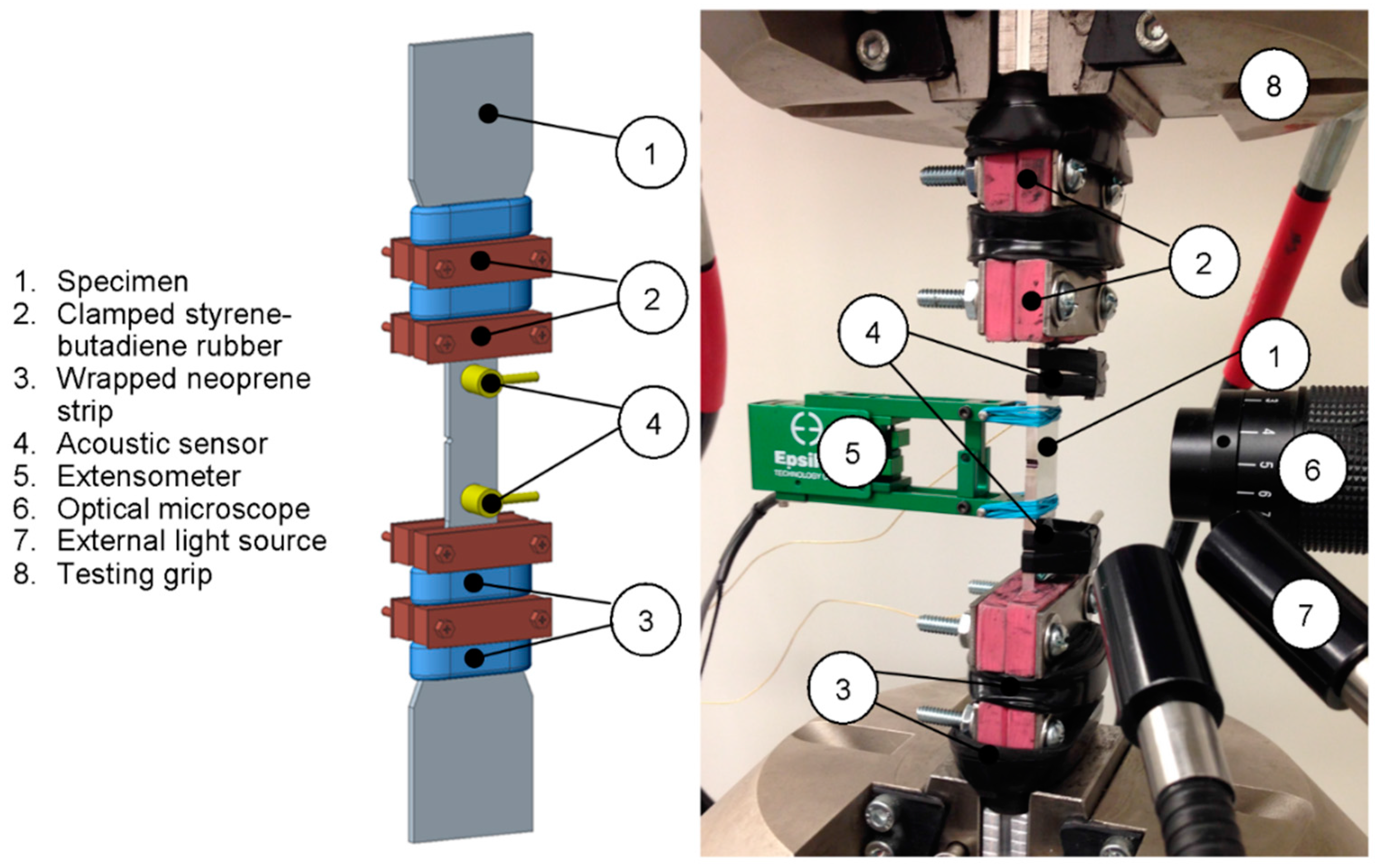

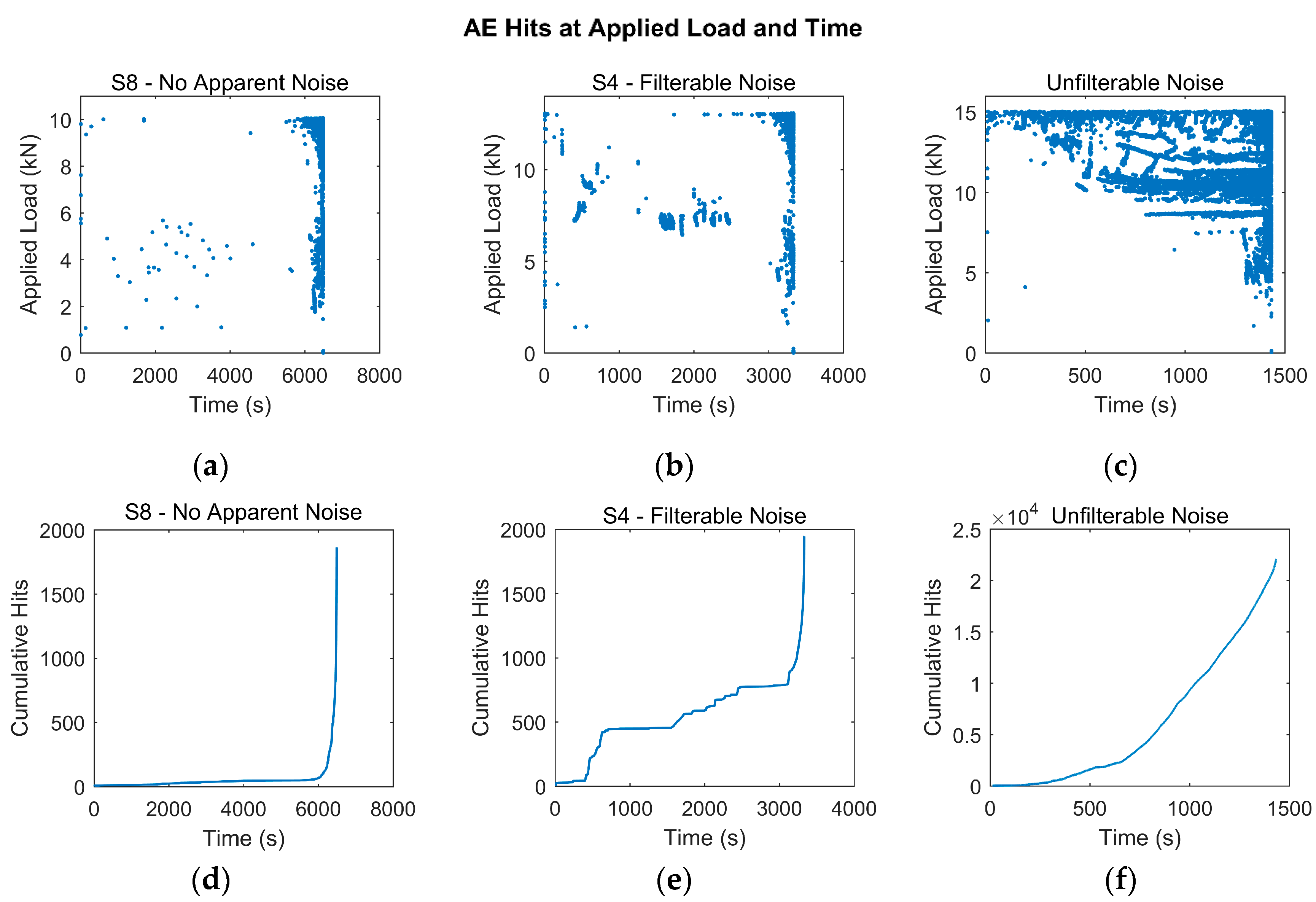
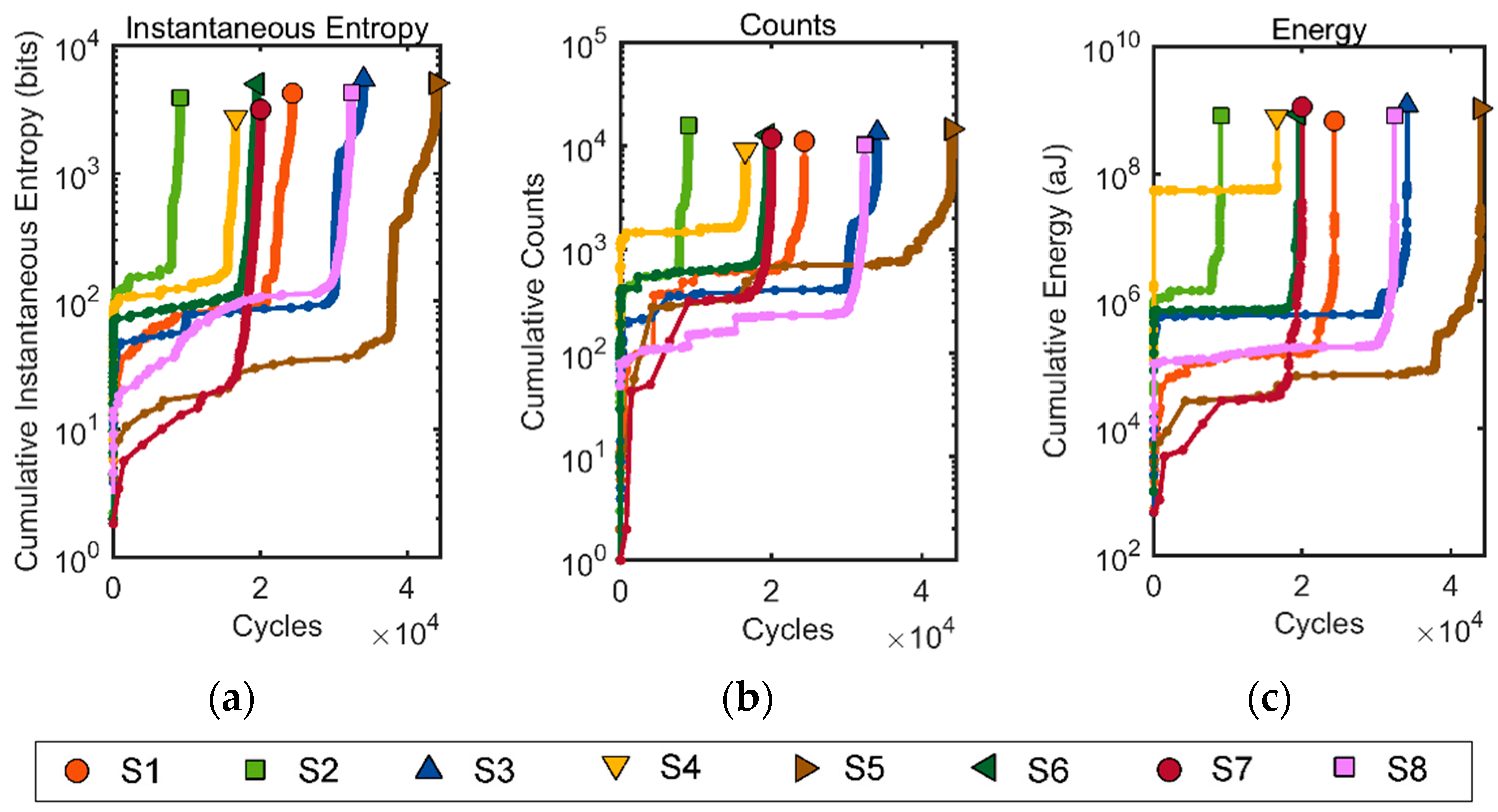
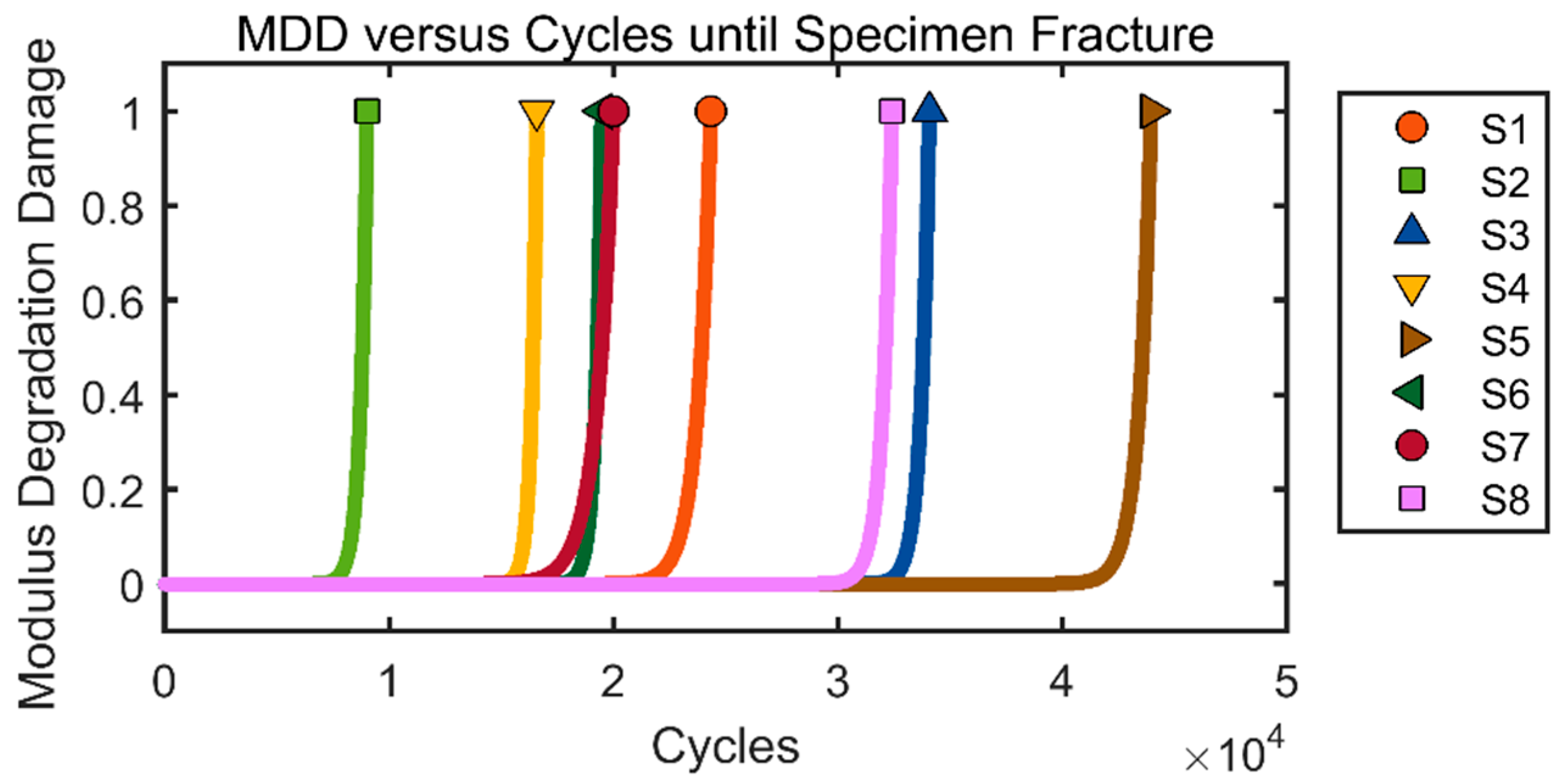

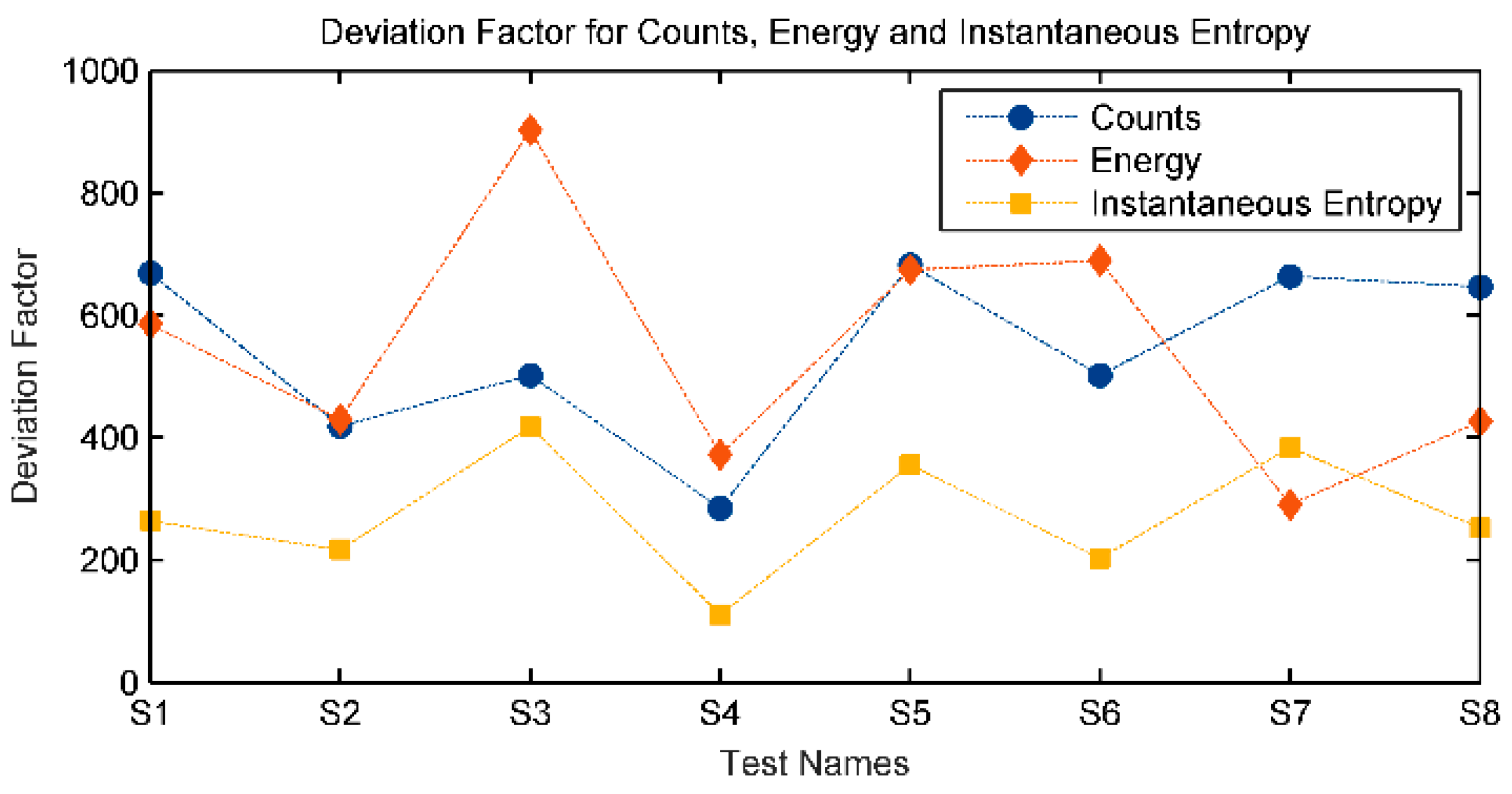
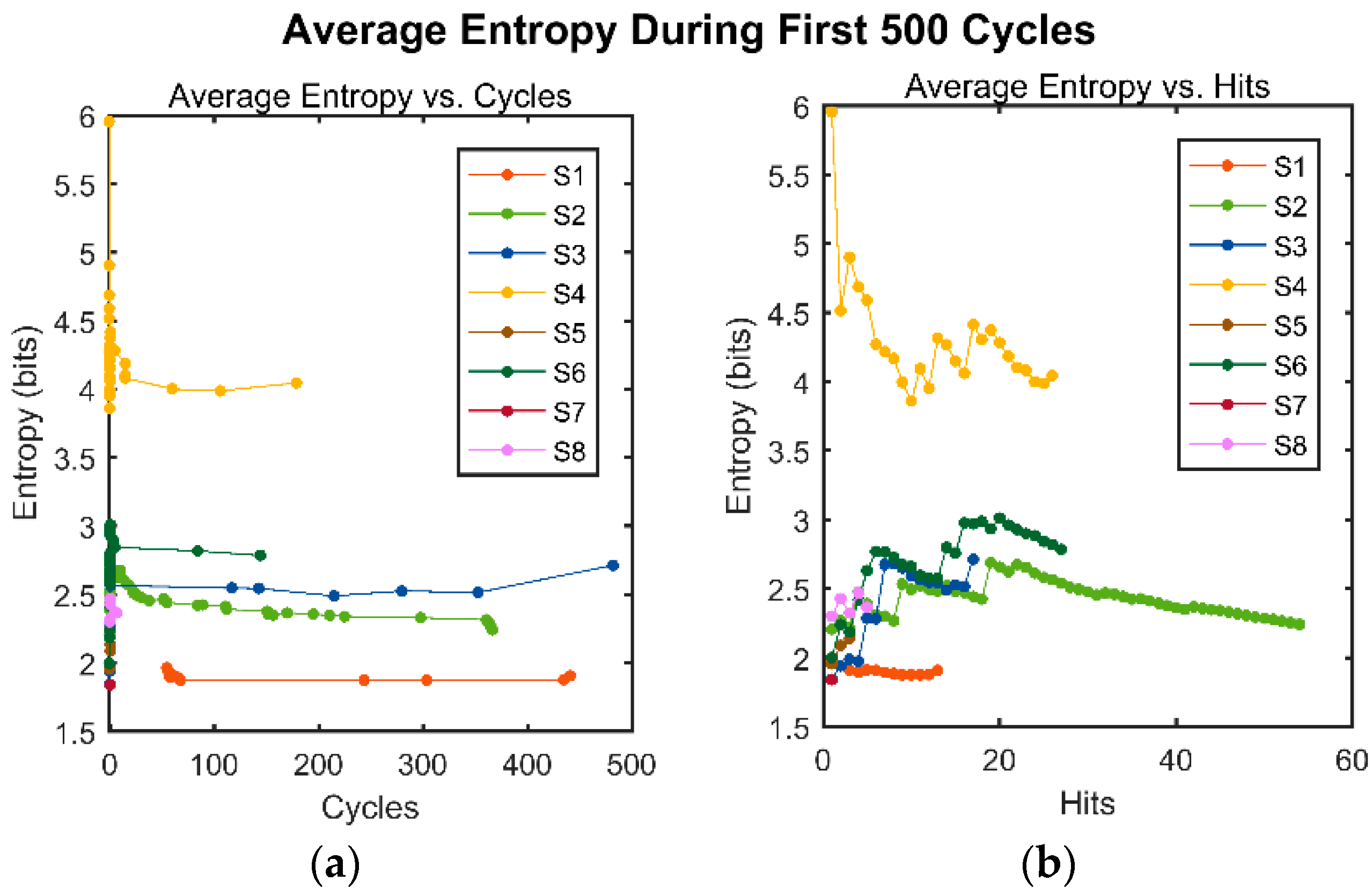

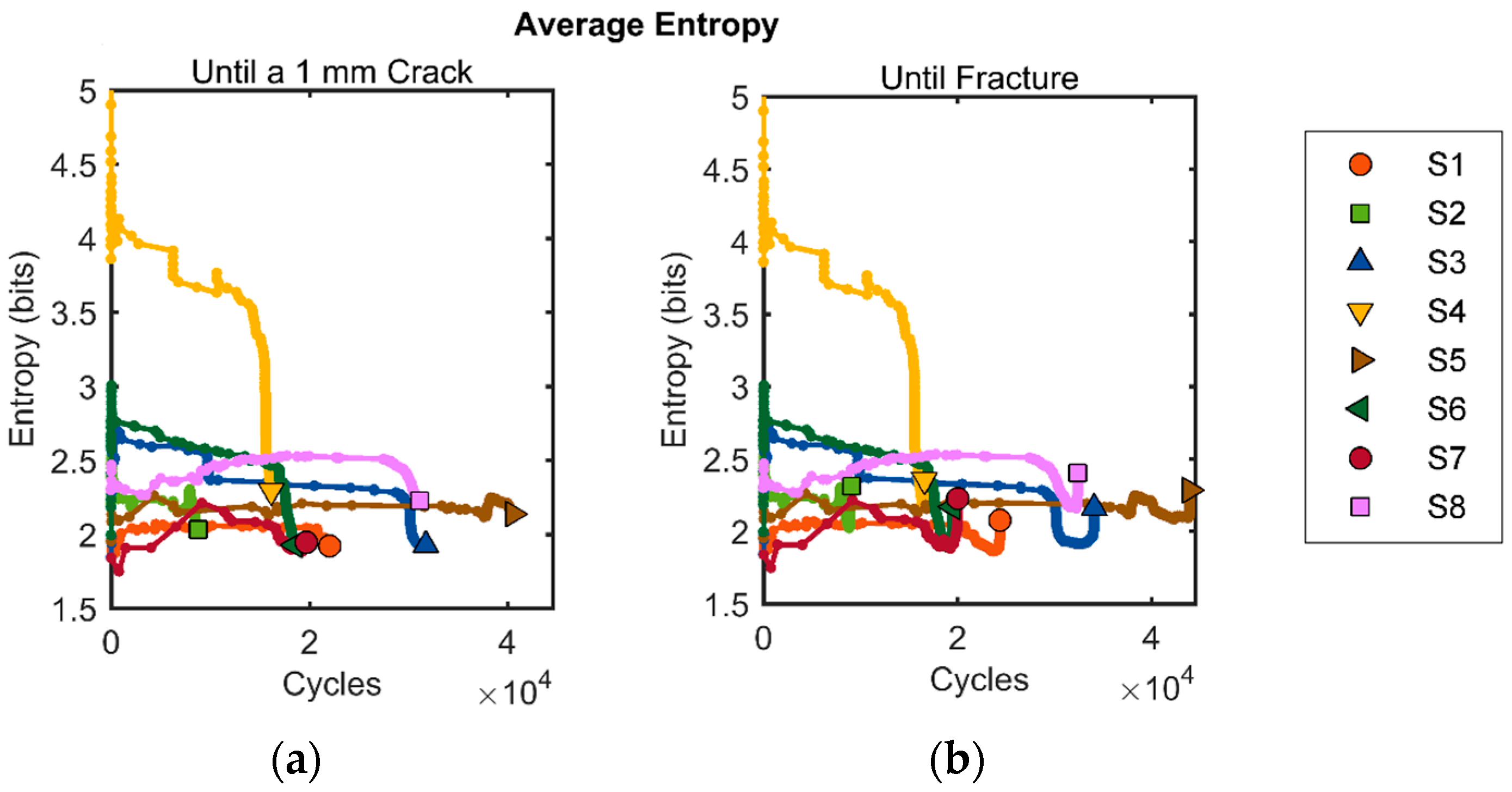
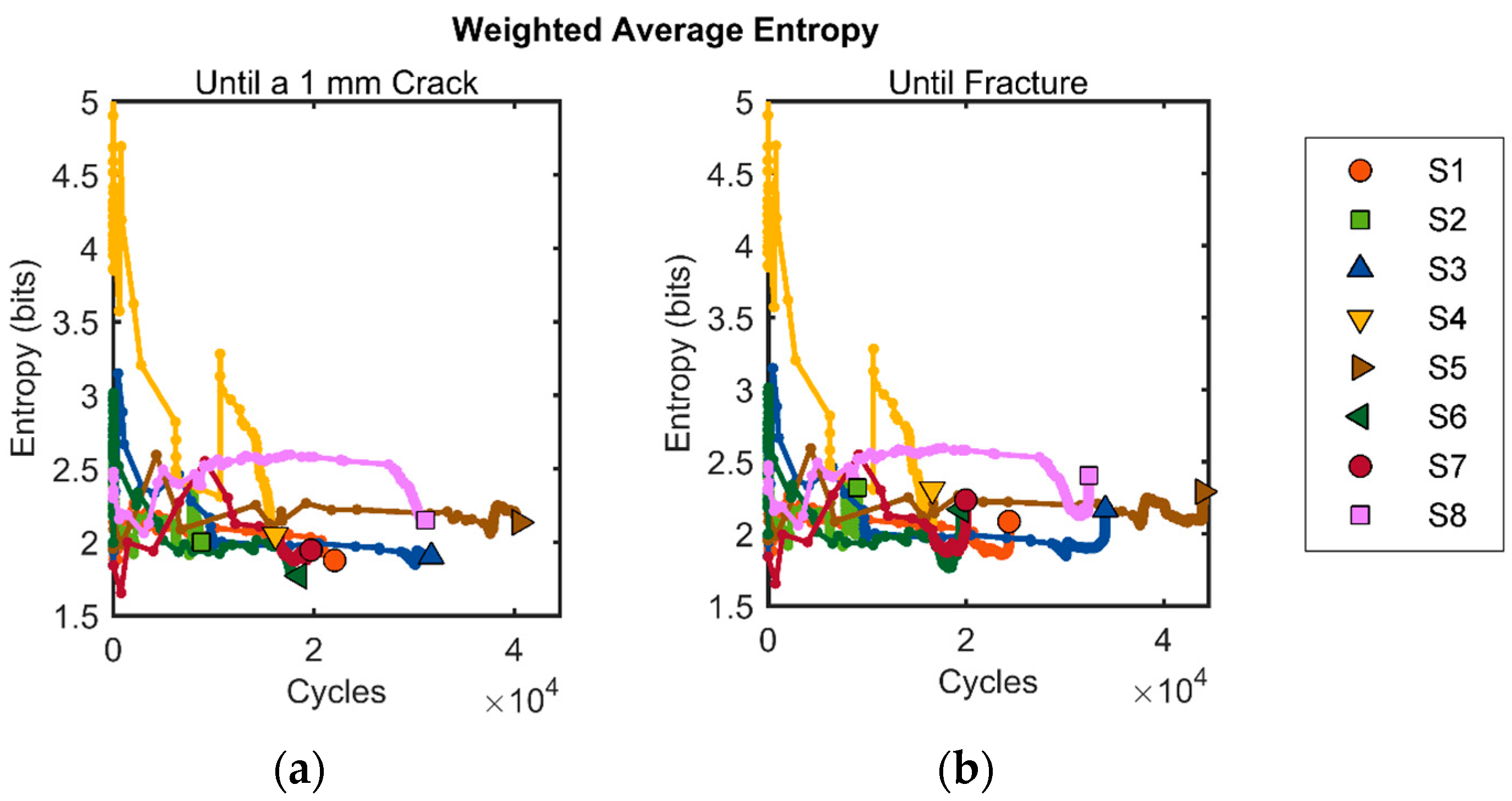
| Element | Al | Zn | Mg | Cu | Cr | Fe | Mn | Si | Ti | V | Zr | Other |
|---|---|---|---|---|---|---|---|---|---|---|---|---|
| Composition (wt %) | 89.7 | 5.7 | 2.6 | 1.4 | 0.20 | 0.15 | 0.08 | 0.06 | 0.02 | 0.01 | 0.01 | 0.05 |
| Material Property | Ultimate Strength (MPa) | Yield Strength (MPa) | Elastic Modulus (GPa) | |||||||||
| Property Value | 587 | 538 | 67.8 | |||||||||
| Parameter | Value |
|---|---|
| Peak definition time (PDT) | 300 µs |
| Hit definition time (HDT) | 600 µs |
| Hit lockout time (HLT) | 1000 µs |
| Sampling rate | 1 MSPS |
| Pre-trigger length | 256 µs |
| Hit length | 2048 µs |
| Band pass filter | 1 kHz–3 MHz |
| Cumulative AE Parameter | Mean (µ) | Standard Deviation (σ) | Coefficient of Variation (CV, %) |
|---|---|---|---|
| Instantaneous entropy | 4221.6 bits | 945.2 bits | 22.4 |
| Counts | 12,360 | 2245 | 18.2 |
| Energy | 9.21 × 108 aJ | 1.87 × 108 aJ | 20.2 |
© 2017 by the authors. Licensee MDPI, Basel, Switzerland. This article is an open access article distributed under the terms and conditions of the Creative Commons Attribution (CC BY) license (http://creativecommons.org/licenses/by/4.0/).
Share and Cite
Sauerbrunn, C.M.; Kahirdeh, A.; Yun, H.; Modarres, M. Damage Assessment Using Information Entropy of Individual Acoustic Emission Waveforms during Cyclic Fatigue Loading. Appl. Sci. 2017, 7, 562. https://doi.org/10.3390/app7060562
Sauerbrunn CM, Kahirdeh A, Yun H, Modarres M. Damage Assessment Using Information Entropy of Individual Acoustic Emission Waveforms during Cyclic Fatigue Loading. Applied Sciences. 2017; 7(6):562. https://doi.org/10.3390/app7060562
Chicago/Turabian StyleSauerbrunn, Christine M., Ali Kahirdeh, Huisung Yun, and Mohammad Modarres. 2017. "Damage Assessment Using Information Entropy of Individual Acoustic Emission Waveforms during Cyclic Fatigue Loading" Applied Sciences 7, no. 6: 562. https://doi.org/10.3390/app7060562





